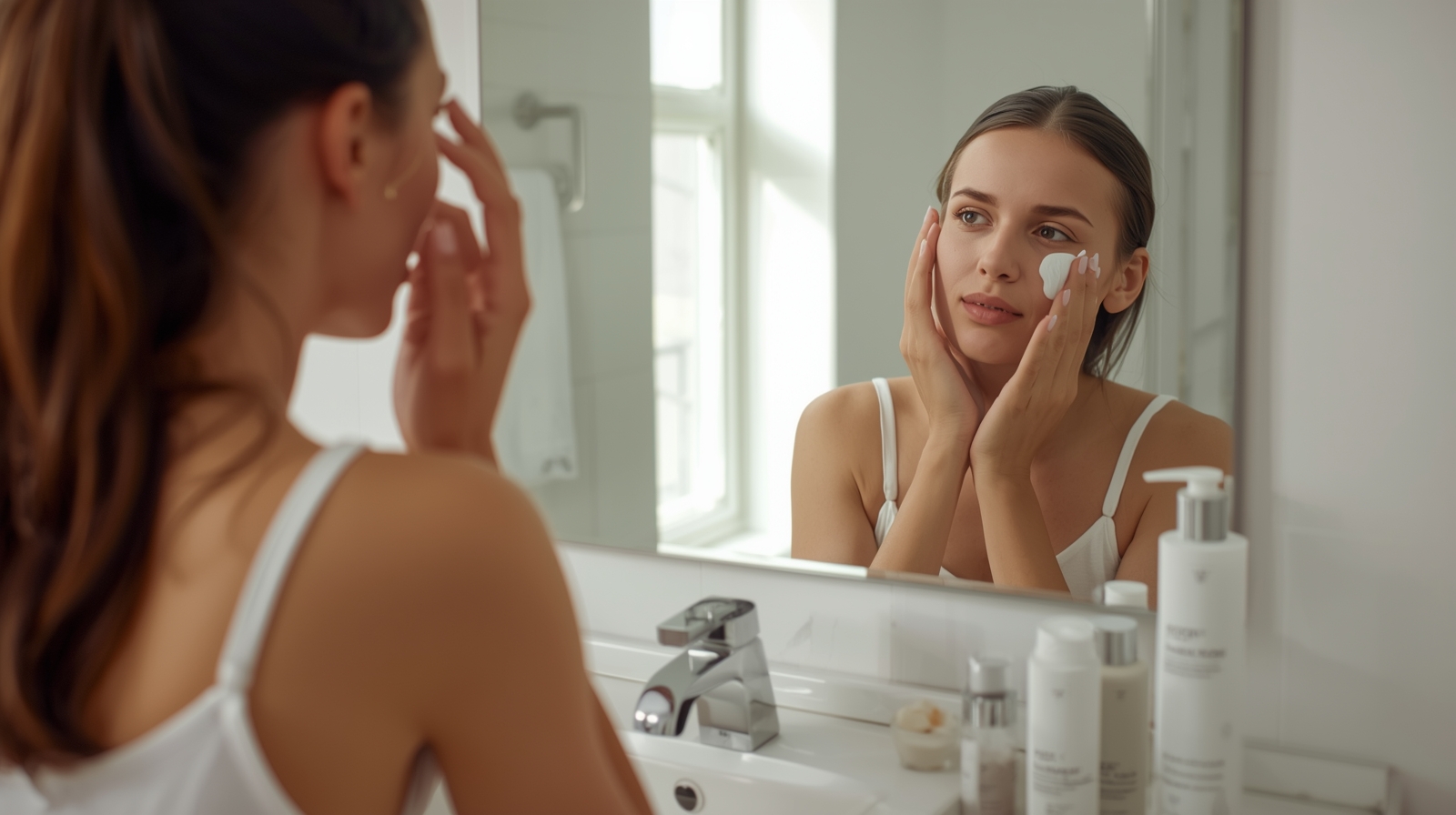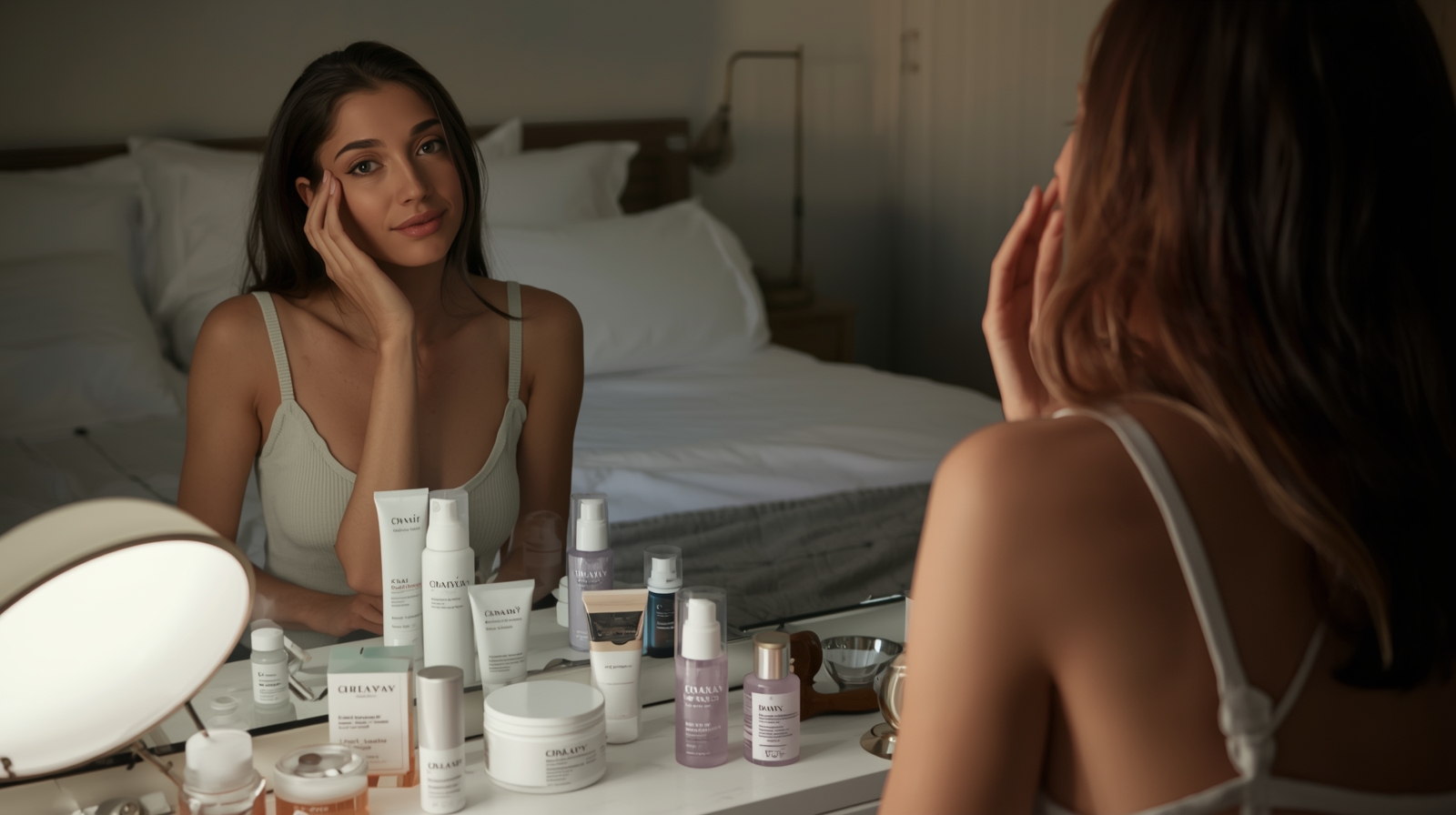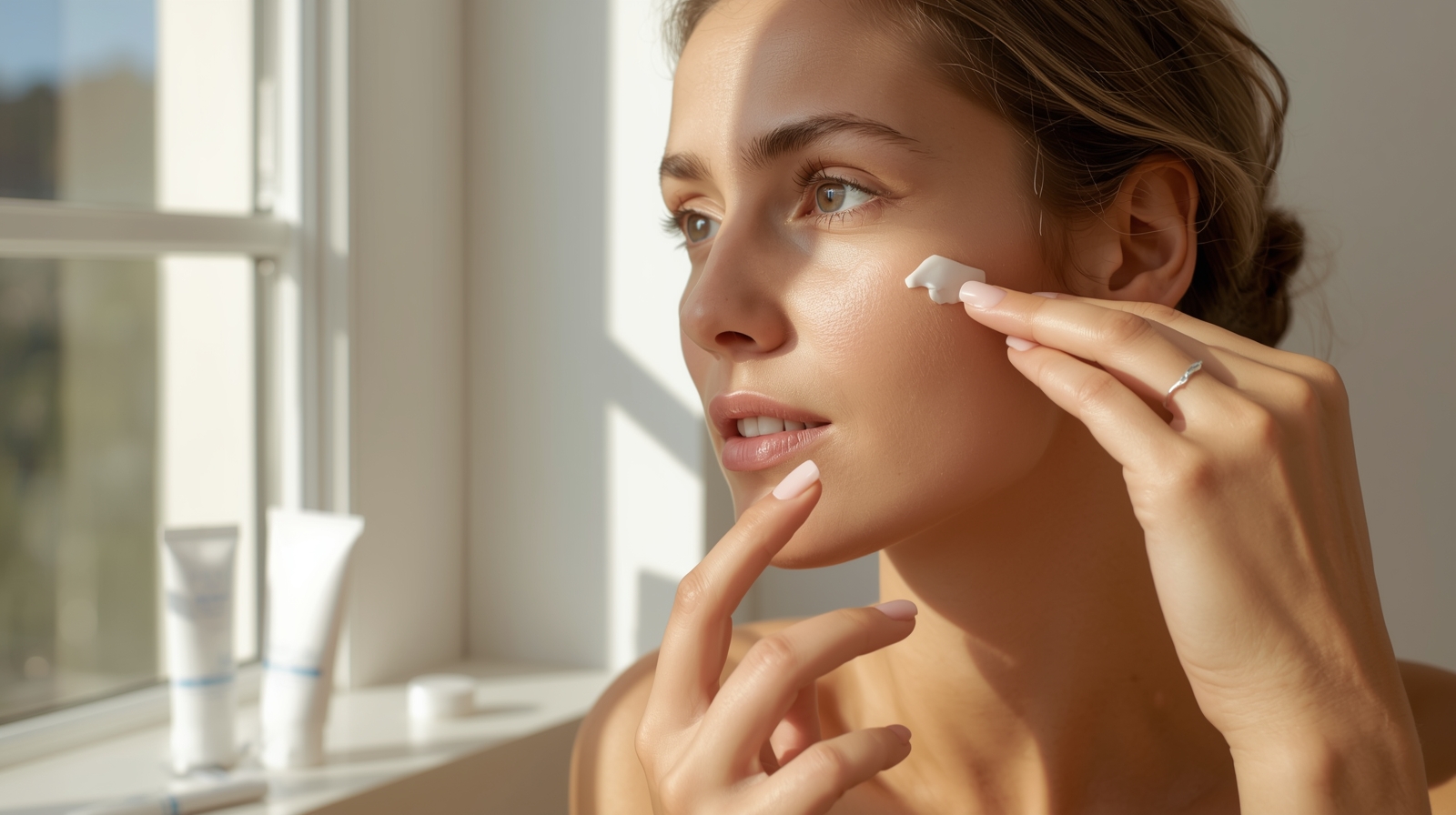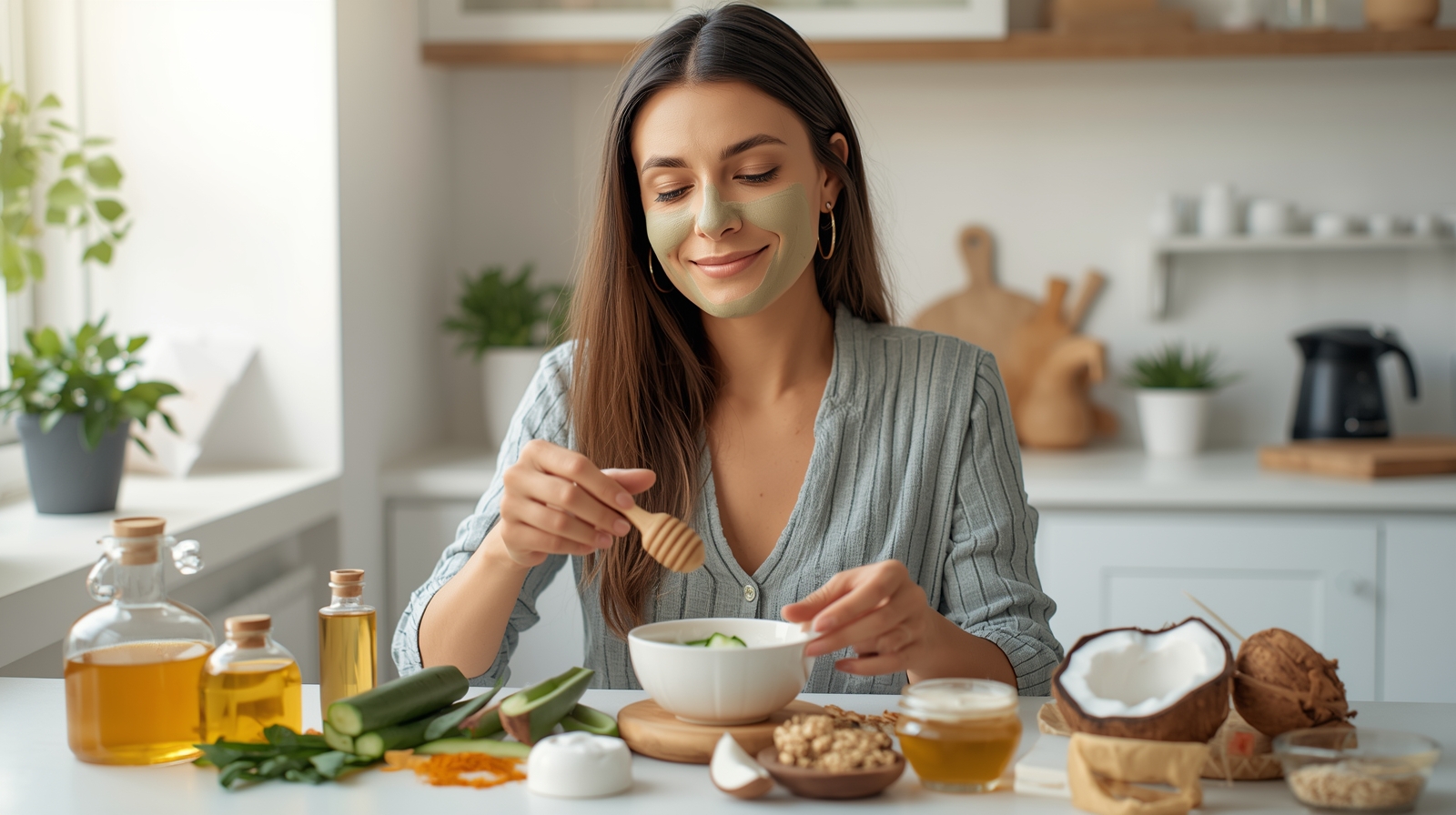Sensitive skin requires careful attention. It reacts easily to ingredients, temperature changes, and environmental factors. Building a skincare routine for sensitive skin involves choosing mild products, reducing unnecessary steps, and focusing on long-term consistency.
This guide explains how to create a routine that supports sensitive skin without irritation. It includes practical steps, ingredient recommendations, product selection methods, and lifestyle factors that influence skin balance.
Section 1: Understanding Sensitive Skin
Sensitive skin is not a disease but a condition in which the skin’s barrier is more reactive than normal. It can lead to redness, dryness, or discomfort after exposure to certain products or weather conditions.
People with sensitive skin may notice reactions to fragrances, alcohol-based products, or strong exfoliants. The key to caring for this skin type is to strengthen the barrier and avoid triggers that cause irritation.
Common signs of sensitive skin include:
- Stinging or burning sensation after using new products.
- Redness or blotchiness after cleansing.
- Tightness or dryness, especially in cold or windy conditions.
- Itching after applying creams or serums.
Recognizing these signs helps you make better product choices and establish a safe daily routine.
Section 2: Causes of Sensitive Skin
Several factors contribute to sensitivity:
- Genetic predisposition: Some people inherit thinner skin barriers.
- Environmental exposure: Pollution, sunlight, and temperature changes.
- Overuse of harsh ingredients: Excess exfoliation or alcohol-based cleansers.
- Medical conditions: Eczema, rosacea, or dermatitis.
- Lifestyle habits: Lack of sleep, stress, and poor diet.
Knowing the cause helps in managing sensitivity through both skincare and lifestyle changes.
Section 3: Core Principles of a Sensitive Skin Routine
A routine for sensitive skin should be:
- Simple – limited steps to avoid product overload.
- Consistent – performed daily without skipping.
- Gentle – using non-irritating ingredients.
- Hydrating – maintaining moisture balance.
- Protective – shielding against UV exposure.
The basic structure includes cleansing, moisturizing, and sun protection during the day, and cleansing and restoring hydration at night.
Section 4: Step 1 – Cleansing the Right Way
Cleansing removes dirt and excess oil but can also strip moisture if done harshly. Sensitive skin benefits from mild, fragrance-free cleansers that maintain pH balance.
Tips for cleansing:
- Use a sulfate-free cleanser labeled for sensitive skin.
- Wash with lukewarm water, not hot or cold.
- Avoid scrubbing tools or rough towels.
- Cleanse twice daily — morning and night.
Pat dry gently with a soft towel. Over-cleansing can damage the skin barrier, so keep this step short and mild.
Section 5: Step 2 – Toning (Optional)
Toners can help balance the skin after cleansing, but not all are suitable for sensitive skin. Many toners contain alcohol or fragrance, which can cause irritation.
If you use toner, choose one with soothing and hydrating ingredients like:
- Aloe vera
- Rose water (pure, alcohol-free)
- Chamomile extract
Apply with hands or a soft cotton pad and avoid rubbing. This step is optional and can be skipped if it causes discomfort.
Section 6: Step 3 – Moisturizing
Moisturizer is essential for maintaining the skin barrier. It locks in hydration and prevents dryness, which is a major trigger for sensitivity.
How to choose a moisturizer:
- Look for fragrance-free and hypoallergenic formulas.
- Use creams or lotions containing ingredients like:
- Ceramides (restore barrier)
- Hyaluronic acid (retains moisture)
- Squalane (supports hydration)
- Glycerin (prevents water loss)
Apply twice daily after cleansing. Always use clean hands and avoid over-applying.
Section 7: Step 4 – Sun Protection
Sunscreen is critical for sensitive skin. UV rays can increase redness and sensitivity, even on cloudy days.
Tips:
- Choose a mineral sunscreen with zinc oxide or titanium dioxide.
- Avoid chemical sunscreens with oxybenzone or avobenzone.
- Use SPF 30 or higher daily.
- Reapply every two to three hours if exposed to sunlight.
Sunscreen should be the final step in your morning routine.
Section 8: Step 5 – Night Routine Overview
At night, skin repairs itself. The evening routine should focus on gentle cleansing and hydration.
Steps:
- Remove makeup using a fragrance-free micellar water or cleansing oil.
- Follow with your regular mild cleanser.
- Apply a soothing moisturizer or serum.
Nighttime is also a good time to use barrier-repair products or calming treatments.
Section 9: Best Ingredients for Sensitive Skin
Certain ingredients are proven to help calm and protect sensitive skin.
1. Ceramides – strengthen barrier function.
2. Niacinamide (Vitamin B3) – supports hydration and reduces redness.
3. Panthenol (Vitamin B5) – helps repair barrier damage.
4. Aloe Vera – provides moisture and cooling.
5. Green Tea Extract – reduces oxidative stress.
6. Oat Extract – soothes irritation and dryness.
Always check ingredient lists for these components when selecting products.
Section 10: Ingredients to Avoid
Sensitive skin reacts strongly to harsh chemicals. Avoid products containing:
- Alcohol (especially denatured or SD alcohol).
- Artificial fragrance or essential oils.
- Sulfates (SLS/SLES).
- Synthetic dyes.
- Strong acids (AHA/BHA without dermatologist guidance).
Patch-test all new products before applying to the full face.
Section 11: Patch Testing New Products
Before using any new product, perform a patch test:
- Apply a small amount behind your ear or on your inner arm.
- Wait 24 hours.
- Check for redness, itching, or burning.
If there is no reaction, the product is safe for facial use. Repeat this test for every new addition to your skincare routine.
Section 12: Building a Basic Morning Routine
Step 1: Cleanse gently.
Step 2: Apply moisturizer.
Step 3: Use mineral sunscreen.
Optional: A hydrating serum between cleansing and moisturizing.
This three-step process helps maintain hydration and barrier protection.
Section 13: Building a Basic Night Routine
Step 1: Remove makeup carefully.
Step 2: Cleanse with mild cleanser.
Step 3: Apply soothing moisturizer or serum.
Optional: Use a sleeping mask with ceramides once or twice a week for extra hydration.
Section 14: Weekly Care for Sensitive Skin
1. Exfoliation:
Exfoliate only once every 10–14 days using mild enzymes or lactic acid under dermatologist advice.
2. Masking:
Use a soothing mask with aloe vera, cucumber, or oatmeal once per week.
3. Massage:
Gently massage the skin with fingertips to promote blood flow without applying pressure.
Section 15: Common Mistakes to Avoid
- Using too many products at once.
- Trying new ingredients too frequently.
- Applying hot water on the face.
- Skipping sunscreen.
- Using exfoliating brushes.
Minimal and consistent care leads to better results for sensitive skin.
Section 16: Managing Environmental Factors
Environmental stress affects sensitive skin directly.
Protection tips:
- In cold weather, use richer moisturizers to prevent dryness.
- In hot weather, use lightweight, water-based formulas.
- Avoid long exposure to wind or direct sunlight.
- Keep indoor humidity balanced with a humidifier if needed.
These small adjustments help reduce external irritation.
Section 17: Choosing the Right Products
When buying products, check for:
- “Fragrance-free” or “for sensitive skin” labels.
- Short ingredient lists.
- Dermatologist-tested products.
Avoid claims like “natural” or “organic” without ingredient transparency.
A good rule: fewer ingredients often mean fewer chances for irritation.
Section 18: Hydration and Diet Support
Internal hydration is as important as external care.
- Drink enough water daily.
- Eat foods rich in omega-3 fatty acids (fish, flaxseeds).
- Include fruits and vegetables high in antioxidants.
- Reduce sugar and processed foods.
Balanced nutrition supports the skin’s defense from within.
Section 19: Stress and Sleep
Sensitive skin reacts to stress and lack of sleep.
- Aim for 7–8 hours of sleep each night.
- Practice breathing exercises or light stretching.
- Avoid touching your face frequently when stressed.
Balanced rest improves the skin’s recovery process.
Section 20: When to See a Dermatologist
If symptoms persist or worsen, seek professional help. A dermatologist can:
- Identify triggers.
- Recommend prescription creams or cleansers.
- Test for allergies or underlying conditions.
Professional guidance ensures your skincare plan aligns with your skin’s needs.
Section 21: Natural Remedies for Sensitive Skin
Some home-based remedies can help support sensitive skin:
- Aloe Vera Gel: Apply pure gel after cleansing.
- Oatmeal Mask: Mix oatmeal and water into a paste and apply for 10 minutes.
- Cucumber Juice: Apply for cooling and hydration.
- Honey: Use raw honey as a mild cleansing mask once weekly.
Always patch-test natural remedies as they can also cause irritation in some cases.
Section 22: Travel Skincare Tips
Sensitive skin can react to climate and water changes while traveling.
- Carry your regular products in travel-size bottles.
- Avoid using hotel soaps or cleansers.
- Keep facial wipes or micellar water for quick cleansing.
- Use sunscreen during travel hours.
Stay consistent with your core routine even when on the move.
Section 23: Seasonal Adjustments
Winter: Use thicker moisturizers with ceramides or squalane.
Summer: Switch to gel-based formulas and reapply sunscreen.
Spring/Fall: Maintain balanced hydration and watch for pollen-related irritation.
Adjust products gradually as the season changes.
Section 24: Minimal Skincare Philosophy
For sensitive skin, less is more. A minimal routine prevents barrier disruption.
Focus on three essentials:
- Cleanser
- Moisturizer
- Sunscreen
Additional products can be added only after consistent success with these basics.
Section 25: Tracking Progress
Document how your skin reacts to products and changes.
- Keep a skincare journal noting reactions or improvements.
- Take monthly photos to observe progress.
- Adjust frequency or products based on consistent results.
Tracking helps build awareness and ensures long-term success.



